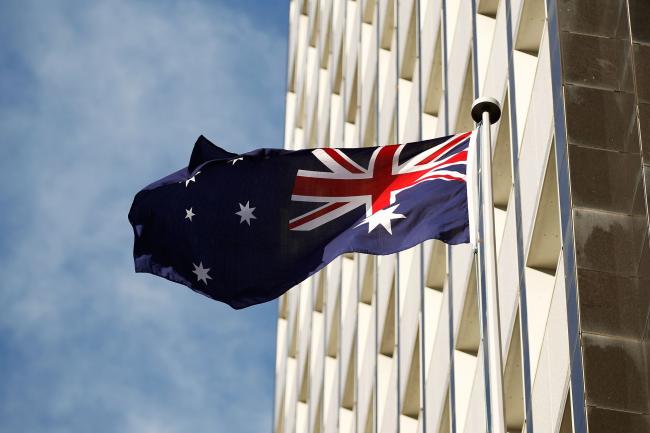(Bloomberg) -- Australia’s central bank cut interest rates and announced a new bond-buying program as it seeks to ensure a rapid recovery across an economy now free of lockdowns.
The Reserve Bank of Australia lowered its key interest rate, yield-curve target and bank lending facility rate to 0.10% from 0.25%, as forecast by an overwhelming majority of economists. The board also said it would buy A$100 billion of government bonds with maturities of around 5-10 years over the next six months.
“The combination of the RBA’s bond purchases and lower interest rates across the yield curve will assist the recovery by: lowering financing costs for borrowers; contributing to a lower exchange rate than otherwise; and supporting asset prices and balance sheets,” RBA chief Philip Lowe said in his statement after Tuesday’s policy meeting.
The move demonstrates the central bank’s desire to quickly drag the economy out of its first recession in almost 30 years and prevent unemployment from becoming entrenched. In addition to cutting interest rates to a fresh record low, the further use of non-conventional policy tools shows the RBA, like its global peers, has reached the end of its conventional ammunition.
The action comes with other central banks across the world setting the stage for further stimulus as a resurgence of the virus threatens a global recovery.
European Central Bank chief Christine Lagarde said last week that there’s “little doubt” policy makers will agree on a new package of monetary stimulus in December. The Bank of England is expected to ramp up its quantitative easing on Thursday when new lockdown restrictions come into force.
The Federal Reserve, meantime, is expected to hold fire on any additional stimulus at its election-week meeting, though it may leave the door open to adjusting bond purchases.
Lowe is boosting stimulus at a time when the economy is showing strong signs of improvement, aided by Victoria state emerging from strict lockdowns that had been in place since July. Advertised job vacancies surged again in October, building approvals jumped and house prices have resumed growth for the first time in six months.
Government stimulus programs see households sitting on a lot of cash -- the savings ratio stood at a 46-year high in the second quarter. This suggests that if the virus can be kept at bay, recovery could be swift. Yet, there are limitations with overseas education and tourism still a write-off until international borders are reopened.
Australia’s authorities will be hoping that, just as Europe and the U.S. are struggling with renewed Covid outbreaks as they head into winter, the summer ahead Down Under could provide sufficient respite from the ravages of the virus.
©2020 Bloomberg L.P.

